R&D Tax Credits For The Software Development Sector
Get the sector experience you need to make a successful R&D tax relief claim
QLC helps software development companies accelerate their R&D claims with our streamlined portal and expert team.


Our Software Development Sector Experience
With many years of experience helping software companies take advantage of R&D tax incentives, QLC understands the unique challenges and opportunities in your industry. We've helped many software development businesses claim millions in R&D tax credits. Let QLC help you.
Find out more in our software development sector success stories below:
Success stories
What Our Clients Say About Us
"I am really impressed with the efficiency of your work, and the results you got for our company. A very friendly, committed and obviously hardworking team. You made the whole process very easy."
Will Tompkins (Director)
Vintage and Classic Cars
"QLC successfully claimed credits for the past 2 financial years, this year was even better. They managed the application and claimed the R&D credit prior to our annual tax bill, making the whole process quicker, easier and more efficient than last year."
Andrew Forbes (Director)
Architecture
"A massive thanks to all your team, obviously with the current situation, this money couldn’t have come at a better time."
Ian Cooke (Director)
Engineering
"From our experience we have always found QLC to be efficient and thorough in their tax appraisals, carefully guiding us through the often complex process. They have a very approachable team, all of which have been able to offer excellent advice when needed."
Ben Reed (Director)
Architecture
"They are proactive and efficient in performing their service and I have been impressed by their dynamism."
Chris Wright (Director)
Motorsport Engineering
"Your company did exactly what you said it would do. It took far less time than the other company that we had used in the past. We are extremely pleased with the outcome."
Adrian Smith (Company Sec)
Manufacturing Firm
"I am really impressed with the efficiency of your work, and the results you got for our company. A very friendly, committed and obviously hardworking team. You made the whole process very easy."
Will Tompkins (Director)
Vintage and Classic Cars
"QLC successfully claimed credits for the past 2 financial years, this year was even better. They managed the application and claimed the R&D credit prior to our annual tax bill, making the whole process quicker, easier and more efficient than last year."
Andrew Forbes (Director)
Architecture
"A massive thanks to all your team, obviously with the current situation, this money couldn’t have come at a better time."
Ian Cooke (Director)
Engineering
"From our experience we have always found QLC to be efficient and thorough in their tax appraisals, carefully guiding us through the often complex process. They have a very approachable team, all of which have been able to offer excellent advice when needed."
Ben Reed (Director)
Architecture
"They are proactive and efficient in performing their service and I have been impressed by their dynamism."
Chris Wright (Director)
Motorsport Engineering
"Your company did exactly what you said it would do. It took far less time than the other company that we had used in the past. We are extremely pleased with the outcome."
Adrian Smith (Company Sec)
Manufacturing Firm
How much could you claim?
The average R&D tax claim in the software development sector
For your own quick estimate, you can use our easy-to-use R&D tax calculator:
£ 47 k
Common R&D activities in the Software Development sector
Below is a comprehensive list of R&D activities in the software development sector that may be eligible for R&D tax relief in the UK.
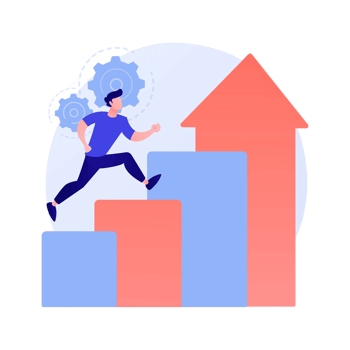
Development of new algorithms
Creating custom algorithms
Designing and developing new algorithms to solve complex problems, optimise performance, or enable new functionalities in software applications.Machine learning and AI algorithms
Developing innovative machine learning models or AI systems, including the training, testing and optimisation of algorithms to improve accuracy and efficiency.Natural language processing (NLP)
Researching and developing new NLP techniques for text analysis, translation, or conversational AI.Innovative software architecture and frameworks
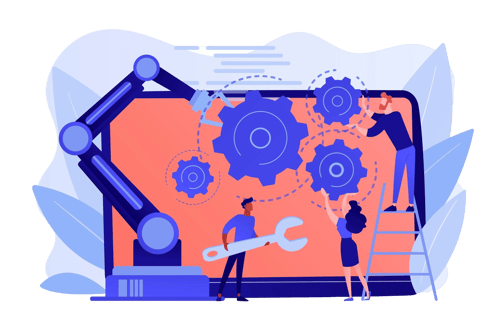
Developing new software architectures
Creating novel software frameworks or platforms to support advanced functionalities, improve scalability, or enhance security.Microservices architecture
Designing and implementing microservices to improve the scalability and flexibility of software systems, especially when overcoming technical challenges around distributed systems.Cloud-based solutions
Developing cloud-native architectures or migrating existing software to cloud platforms while resolving technical uncertainties related to performance, security and cost-efficiency.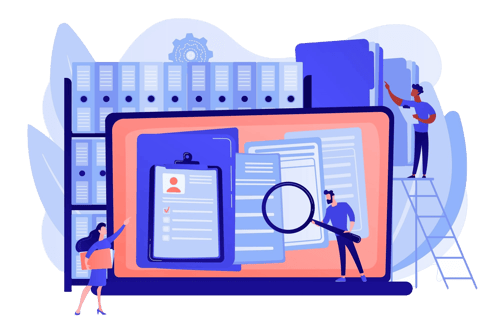
Systems integration and interoperability
Integration of complex systems
Overcoming challenges in integrating different software systems, platforms, or data sources that are not designed to work together, ensuring seamless interoperability.APIs and web services
Developing custom APIs or web services that enable communication between disparate systems or allow integration with third-party platforms in novel ways.
Big data and data analytics
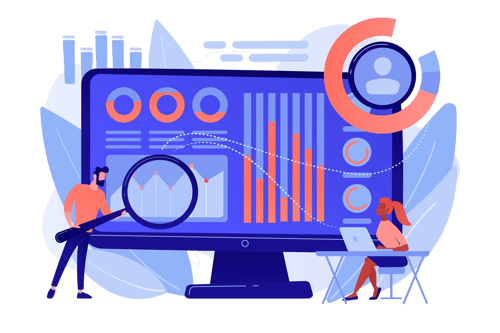
Developing big data solutions
Creating systems that process large volumes of data in real-time, overcoming challenges related to data storage, processing speed and accuracy.
Advanced data analytics platforms
Innovating with data analytics platforms to provide deeper insights, such as developing custom analytics algorithms or improving data processing pipelines.

Development of custom software solutions
Bespoke software development
Developing custom software solutions tailored to specific client or industry needs, especially where existing solutions do not meet requirements or involve significant technical challenges.
Software for specific hardware integration
Developing software that integrates with unique or proprietary hardware systems, ensuring compatibility and functionality while resolving technical challenges.
Security and encryption innovations

Developing new encryption methods
Researching and implementing new encryption techniques to improve data security, particularly where standard encryption methods are insufficient.Cybersecurity solutions
Developing advanced cybersecurity systems, such as real-time threat detection, automated response mechanisms, or systems that can prevent zero-day attacks.Data privacy solutions
Innovating in privacy-focused technologies, such as creating anonymisation or pseudonymisation techniques that comply with stringent data protection regulations.

Scalability and performance enhancements
Optimising software for scalability
Researching methods to scale software systems to handle a larger user base, increased data load, or distributed environments without sacrificing performance.
Performance optimisation
Developing innovative techniques to improve the speed, efficiency, or responsiveness of software applications, including optimising code, databases, or network operations.
User interface (UI) and user experience (UX) Innovations
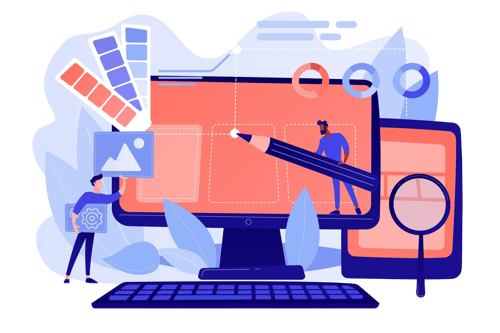
Developing new UI/UX frameworks
Innovating with user interface design to improve user interaction, accessibility and usability, especially when integrating new technologies or functionalities.Responsive design techniques
Creating responsive design systems that adapt to various devices, screen sizes and user environments, overcoming technical challenges related to fluid interfaces and cross-device compatibility.Interactive and immersive experiences
Developing immersive user experiences, such as virtual reality (VR) or augmented reality (AR) applications, that involve resolving technological uncertainties
Artificial intelligence and machine learning
AI-driven automation
Developing AI systems that automate complex tasks, especially where there are significant challenges in training models, handling large datasets, or interpreting results.Innovative use of neural networks
Creating new types of neural networks or applying neural networks in innovative ways to solve real-world problems.
AI for predictive analytics
Developing AI models that predict outcomes based on historical data, overcoming challenges related to data accuracy, training and model performance.
Blockchain and distributed ledger technology (DLT)

Developing blockchain solutions
Innovating in blockchain technology to enable secure, transparent and efficient transactions, smart contracts, or decentralised applications.Cryptographic protocols
Researching and developing new cryptographic protocols to enhance blockchain security and performance.DLT for non-financial applications
Creating distributed ledger technologies for use cases beyond finance, such as supply chain management or digital identity, overcoming technical limitations and ensuring scalability
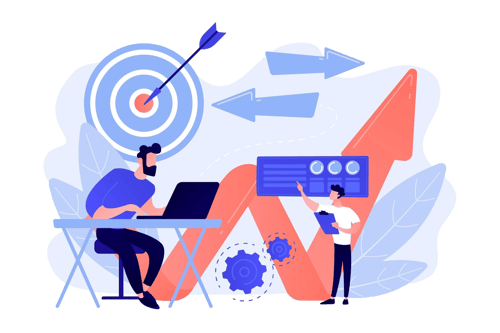
Cloud computing and infrastructure development
Cloud infrastructure optimisation
Developing new techniques to optimise cloud infrastructure, reduce costs, or improve security and performance, particularly when overcoming challenges related to multi-cloud or hybrid cloud environments.Serverless architecture
Innovating with serverless computing platforms to reduce infrastructure overhead and improve system responsiveness, solving challenges in function orchestration and scaling.
Real-time systems and embedded software
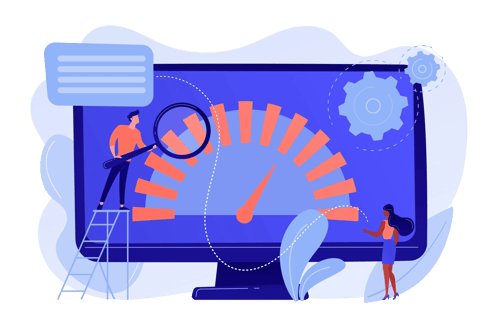
Real-time data processing
Developing systems that process data in real-time with low latency, particularly for applications in IoT, financial trading, or telecommunications.Embedded systems development
Innovating with embedded software for specialised hardware, resolving challenges in resource-constrained environments and ensuring real-time operation

Mobile app development
Cross-platform mobile development
Creating or optimising mobile applications that work across different platforms (iOS android), particularly when resolving issues related to performance, compatibility and user experience.Game development and interactive media
- Game engine optimisation: Developing or enhancing game engines to improve performance, enable new graphical effects, or create more realistic physics simulations.
Game development and interactive media

Game engine optimisation
Developing or enhancing game engines to improve performance, enable new graphical effects, or create more realistic physics simulations.Virtual reality (VR) and augmented reality (AR) games
Innovating in VR and AR game development, overcoming technical challenges related to rendering, motion tracking and user interaction in immersive environments.Procedural generation
Developing systems for procedural content generation, such as creating environments, levels, or characters algorithmically.

Innovations in software testing and quality assurance (QA)
Automated testing solutions
Developing automated testing tools or frameworks to improve software quality and reduce manual testing efforts.Testing in distributed environments
Researching methods for testing and validating software in distributed or cloud-based environments, overcoming challenges related to scalability and performance.
DevOps and continuous Integration/continuous deployment (CI/CD)
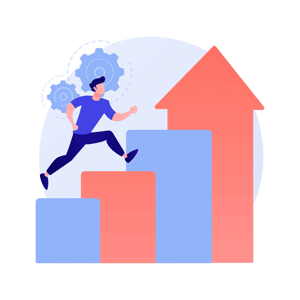
Innovating in CI/CD pipelines
Developing advanced CI/CD systems to automate software deployment, improve code quality and reduce delivery times while solving issues related to integration, security and monitoring.Infrastructure as code (IaC)
Innovating with infrastructure as code practices, enabling dynamic and scalable infrastructure through automation and code-based provisioning.
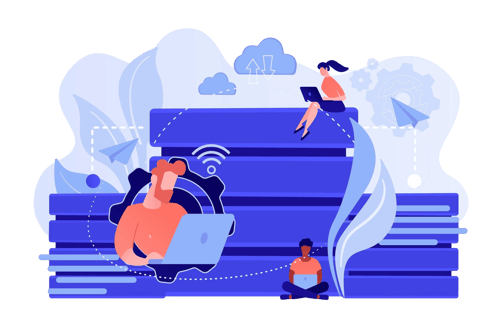
Edge computing and IoT solutions
Edge computing infrastructure
Developing systems that process data closer to the source in IoT environments, overcoming challenges in latency, bandwidth and resource management.IoT platform development
Creating IoT platforms for real-time device monitoring, data aggregation, or automation, addressing issues like device compatibility, scalability and security.
Augmented reality (AR) and virtual reality (VR) development
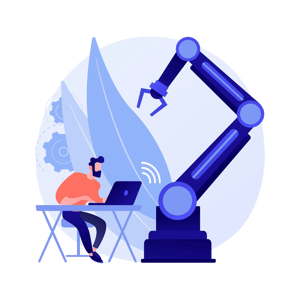
Innovating with AR/VR applications
Developing AR or VR platforms and experiences, particularly for industries like construction, healthcare, or retail, resolving issues with rendering, latency and user interaction.Haptic feedback systems
Creating haptic feedback systems for immersive AR/VR experiences, ensuring real-time responsiveness and overcoming hardware-software integration challenges.
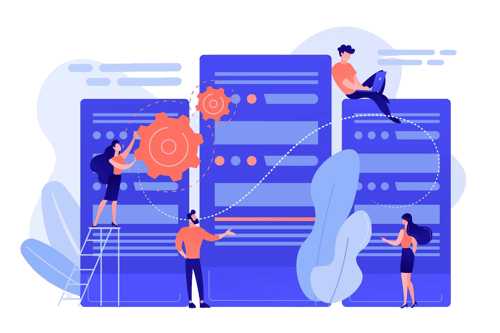
Software as a service (SaaS) development
SaaS platform optimisation
Developing SaaS platforms that offer scalability, reliability and security while resolving technical challenges related to multi-tenancy, performance optimisation and cloud deployment.Subscription and billing management systems
Innovating in subscription management, billing automation, or customer self-service systems for SaaS platforms.
Innovation in database systems

NoSQL and distributed databases
Researching and developing database systems optimised for handling unstructured or semi-structured data, particularly where high availability, performance and scalability are required.Subscription and billing management systems
Innovating with advanced techniques to optimise database performance, particularly in large-scale or real-time environments.

Claiming R&D tax credits can provide your software development business with the funds needed to reinvest in cutting-edge technology
Why choose QLC?
QLC and our portal help businesses like yours claim R&D tax credits and tax relief faster and more successfully than ever.

End-to-end service

Easy-to-use customer portal

Faster payouts than our competitors

See your money in 16 days

Flexible comms

All sectors and sizes

No minimum fee

Stakeholder transparency
Software Development Sector R&D Tax Credit FAQ
What types of software development activities qualify for R&D tax relief?
Eligible activities typically include developing new software, creating custom algorithms, overcoming challenges in system integration, improving security protocols and enhancing software performance or scalability. Any project that seeks to solve technological uncertainties and cannot easily be achieved using existing tools or knowledge may qualify. Check our comprehensive list above and if you have more questions, get in touch.
Can improvements to existing software qualify for R&D tax credits?
Yes, significant improvements to existing software can qualify for R&D tax relief if they involve resolving technical challenges, such as enhancing performance, scalability, or security. Simple upgrades or routine updates, however, do not qualify unless they involve technological innovation.
What costs can be claimed in an R&D tax relief claim for software development?
Qualifying costs include staff salaries (for developers, testers, project managers), software licences used in R&D, subcontractor costs for outsourced R&D work, materials and overheads such as utilities directly related to the R&D project. Prototyping, testing and iterative development costs are also claimable.
Can we claim R&D tax credits for unsuccessful or failed projects?
Yes, failed projects still qualify for R&D tax credits as long as they aim to resolve technological uncertainties. The relief is based on the efforts to innovate or overcome technical challenges, not the success of the project outcome.
Does developing custom algorithms qualify as R&D?
Yes, the development of custom algorithms—especially those that solve complex problems or significantly improve performance—can qualify for R&D tax credits. The key is that the development involves technological uncertainty and advances the overall capability in the field.
Can security improvements, such as new encryption methods, qualify for R&D tax relief?
Yes, developing new encryption techniques, improving cybersecurity measures, or creating advanced systems for securing data can qualify as R&D if they involve overcoming technical challenges that go beyond standard security practices.
Can we claim R&D tax credits for developing software for internal use?
Yes, if the software being developed for internal use involves overcoming technological challenges or is significantly innovative, it can qualify for R&D tax relief. However, routine software development or commercial off-the-shelf (COTS) software typically does not qualify unless it's heavily customised or adapted for a specific technical challenge.
Can R&D tax credits be claimed for developing SaaS platforms?
Yes, developing innovative Software as a Service (SaaS) platforms, especially where you are solving challenges related to scalability, security, or multi-tenancy, can qualify for R&D tax credits. The project must involve overcoming technical hurdles and improving functionality beyond existing solutions.
Can we claim R&D tax credits for software projects funded by grants?
Receiving a government grant or state aid may affect eligibility for the SME R&D scheme. However, you may still be able to claim under the RDEC scheme, even if you are an SME. The treatment of grant-funded projects depends on how the grant is structured and whether it’s classified as notified state aid.
What happens if the software project is ongoing? Can we still claim R&D tax credits?
Yes, you can claim R&D tax credits for ongoing projects as long as they meet the eligibility criteria. R&D tax relief can be claimed on a project-by-project basis, even if the work is not yet completed or if further iterations are expected.